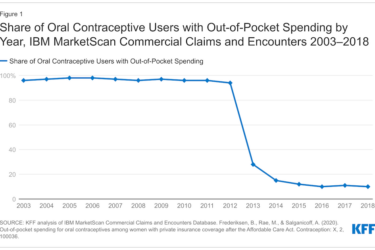Covering health care requires writing about the cost of care. Determining if costs are rising or falling and by how much is an integral part of the beat. After all, cost control is one of the primary concerns behind health care reform.

But A. Mark Fendrick, M.D., the director of the Center for Value-Based Insurance Design at the University of Michigan, suggests it’s time to shift the discussion from how much the United States spends on care to how well we spend money on health care. Focusing closely on costs leads health systems to use a one-size-fits-all approach to cost sharing, and requiring consumers to pay more for needed services may have a perverse effect of becoming a barrier to care, he explains. Conversely, VBID encourages a more clinically nuanced approach to financial incentives that involves setting consumers’ out-of-pocket costs for health care services and medications to motivate patients to do what research proves will help keep them healthy.
Fendrick will explain V-BID and the role it should play in the health care system during an AHCJ webcast, “How value-based insurance design breaks down barriers to care,” on Aug. 14, 1-1:30 pm ET.
V-BID seeks to align patients’ out-of-pocket costs, meaning their copayments, deductibles, and premium payments, with the value of health services, the center says. “This approach to designing benefit plans recognizes that different health services have different levels of value. By reducing barriers to high-value treatments (through lower costs to patients) and discouraging low-value treatments (through higher costs to patients), health systems that incorporate the concepts of V-BID can improve patient outcomes,” it says.
This webinar is timely for many reasons, but two in particular. First, many Americans are enrolled in high-deductible health plans (HDHPs) and some health policy experts are concerned that high deductibles present a barrier to care for those who can least afford such costs. We covered this issue in May as have other journalists, such as Kerry Grens in Modern Healthcare and Carey Goldberg at WBUR’s CommonHealth CommonHealth blog. Last month, we wrote about how V-BID relates to specialty pharmaceuticals.
The second reason is that last week representatives Diane Black (R-Tenn.) and Earl Blumenauer (D-Ore.) introduced the Value Based Insurance Design (V-BID) for Better Care Act of 2014 HR 5183 (PDF) in the U.S. House of Representatives. If passed, the bill would allow the federal Centers for Medicare & Medicaid Services to establish a demonstration program for Medicare Advantage plans to use V-BID to reduce the copayments or coinsurance for beneficiaries with specific chronic conditions.
The demonstration project is needed because Medicare Advantage plans are not allowed to tailor benefits to specific groups of patients who may receive particularly high value from a given service, according to a report, “Implementing Value Based Insurance Design in the Medicare Advantage Program” (PDF). “If Medicare Advantage plans try to encourage the use of a service by lowering copays, they must lower copays for everyone in the plan, even though clinical appropriateness for specific patients may vary widely,” the report says.
“Specifically, this legislation would allow Medicare Advantage plans the flexibility to improve how care is delivered by allowing them to use V-BID practices that give beneficiaries access to lower costs for certain medications or services that are clinically proven to have good health outcomes,” Black said.
To be clear, proponents of V-BID do not advocate removing all copayments and deductibles. Decreasing all cost-sharing regardless of the clinical benefit of doing so could lead to the overuse or misuse of services that are potentially harmful or provide little clinical value, Fendrick says.
Rather, Fendrick recommends using nuanced financial incentives because medical services differ in the clinical benefit they provide. “The basic premise of V-BID is to align consumer incentives with value by reducing barriers to high-value health services and providers (‘carrots’) and discouraging the use of low-value health services and providers (‘sticks’),” the report says. When ‘carrots’ and ‘sticks’ are used in a clinically nuanced manner, V-BID improves health care quality and controls spending growth,” he says.








